UKCCS
Type of resources
Topics
Keywords
Contact for the resource
Provided by
Years
Formats
Representation types
Update frequencies
Scale
Resolution
-
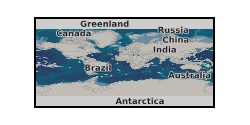
This poster on the UKCCSRC Call 1 project, Determination of water Solubility in CO2 Mixtures, was presented at the Cambridge Biannual, 02.04.14. Grant number: UKCCSRC-C1-21.
-
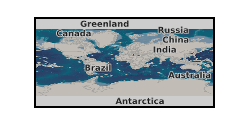
This presentation on the UKCCSRC (UK Carbon Capture and Storage Research Centre) Call 1 project, Multi-Phase Flow Modelling for Hazardous Assessment, was presented at the Cranfield Biannual, 22.04.15. Grant number: UKCCSRC-C1-07.
-
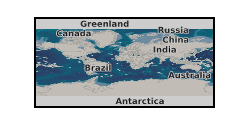
A new synthetic method for studying phase behaviour is described using Attenuated Total Reflection (ATR) spectroscopy. The method has been developed to provide relevant information on the solubility of water in CO2. The dew point of water has been determined at three different pressures, viz. (4.05, 5.05 and 6.03) MPa with mole fractions of water between 0.01 and 0.04. The data obtained fill the gap in the literature in these regions of pressures and temperatures and could be of high importance in the context of Carbon Capture and Storage (CCS) technology. Indeed, the presence of water in the captured CO2 could damage the pipeline used for CO2 transport. Hence, it is very important to have a fully understanding of the behaviour of the (CO2 + H2O) mixtures in wide range of temperature relevant for CCS. The paper is available at http://www.sciencedirect.com/science/article/pii/S0021961415003547, DOI: 10.1016/j.jct.2015.09.024. UKCCSRC Grant UKCCSRC-C2-185.
-
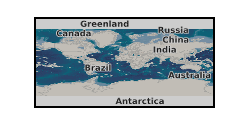
This presentation on the UKCCSRC Call 1 project, Tractable Equation of State for CO2 Mixtures, was presented at the Cranfield Biannual, 22.04.15. Grant number: UKCCSRC-C1-22.
-
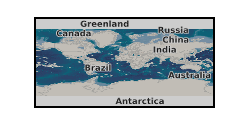
Revised full proposal cover sheet for scientific drilling (852-CPP2) 'GlaciStore: Understanding Pleistocene glaciation and basin processes and their impact on fluid migration pathways (North Sea)', submitted to Integrated Ocean Discovery Programme (IODP) April 2016. The full proposal cover sheet document is publicly available from IODP; the submitted full proposal document is restricted to the proponents for publication and for review and response from IODP. The proposal is a revision of full proposal 852-CPP in response to review by IODP. The lead submitter, on behalf to the GlaciStore consortium is Heather Stewart, British Geological Survey (BGS).The 32 proponents are from research and industry organisations in the UK, Norway, USA and Canada (BGS, Institute for Energy Technology, Lundin Norway AS, Memorial University of Newfoundland, SINTEF Energy Research, Statoil ASA, University of Bergen, University of Edinburgh, University of Oslo and University of Ottawa University of Texas at Austin). The revised full proposal cover sheet states the names of proponents of the 'GlaciStore' consortium and details for the lead submitter of the bid. The full proposal cover sheet comprises: an abstract of the submitted full proposal including description of project funding support as a Complementary Project Proposal: describes and states the scientific research objectives; summarises proposed non-standard measurements; tabulates details of the 13 proposed drill sites (revised from full proposal CPP-852) to address the scientific objectives. The objectives are to investigate: glacial history and sedimentary architecture; fluid flow and microbial processes in shallow sediments; and the stress history and geomechanical models for strata that have experienced multiple glacial and interglacial cycles. The table of revised proposed drilling sites includes designation of primary or alternate sites, the co-ordinates of the position and water depth at each proposed site, the objective for drilling and sampling and the depth to achieve the objective. The proponents, their affiliation, expertise and role for the submission are listed. UKCCSRC Grant UKCCSRC-C1-30.
-
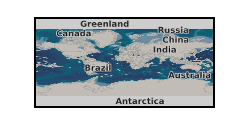
The project will three-dimensionally image hydraulically conductive features in the reservoir, caprock and overburden of an active CO2 injection site: the Aquistore site, Canada. Our research will provide important information on potential migration pathways within the storage complex to inform future monitoring strategies at the Aquistore site and at future storage sites. We will monitor micro-seismic events prior to, and during, CO2 injection using a three-component nanoseismic surface monitoring array which will complement data collected by the existing geophone network at the site. This analysis can be used to provide deep focussed monitoring information on permeability enhancement near the injection point. As injection continues it will also enable imaging of any flowing features within the caprock. Grant number: UKCCSRC-C1-19.
-

This poster on the UKCCSRC Call 1 project 3D Mapping of Large-Scale Subsurface Flow Pathways using Nanoseismic Monitoring was presented at the CSLF Call project poster reception, London, 27.06.16. Grant number: UKCCSRC-C1-19. Injection of fluids into geological formations induces microseismic events due to pressure changes causing either opening mode or shear mode fracturing. Injection for CO2 storage is designed to be well below the pressures required for hydraulic fracturing. Due to the inherent heterogeneity of geological formations, some existing structures will be critically stressed so small microseismic events are inevitable. Current reservoir monitoring strategies either examine time-lapse variations in the rock’s elastic properties (4D seismic) over diffuse areas, or aim to detect leakage from diffuse and point sources at the seabed (e.g. the QICS project). The aim of the project is twofold: • test the potential of a new technology (nanoseismics) for passive seismic monitoring that aims to image focused flow pathways at depth of an active CO2 injection site: the Aquistore site, Canada; • use a multi-disciplinary approach to interpret passive seismic data sets obtained during operation of the same site.
-
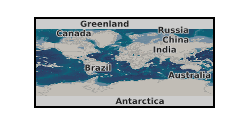
This project will tackle one of the key technical challenges facing the development of commercially viable CO2 transport networks: modelling the phase behaviour of impure carbon dioxide, under the conditions typically found in carbon capture from power stations, and in high-pressure (liquid phase) and low-pressure (gas phase) pipelines. Models for phase behaviour are known as equations of state (EoS). EoS vary in their mathematical form, accuracy, region of validity and computational complexity. Because different applications have different requirements, there is no single EoS that is ideal for all applications. This project will use cutting-edge computer algorithms to automatically reparameterise EoS for CCS modelling. This flexible technique will allow a user to specify their requirements and re-derive model parameters matched to their needs. Our algorithms will directly produce functional forms for EoS from experimental data, thus fully automating the derivation of EoS. This will enable users to rapidly produce bespoke EoS that are tailored to their particular application, and will enable these models to continually evolve as new measurements become available, ensuring that experimental advances are rapidly converted into improved CCS modelling and, ultimately, better performance and efficiency of real CCS processes. Grant number: UKCCSRC-C1-22.
-

CO2 equation of state software from UKCCSRC project: Tractable equations of state for CO2 mixtures in CCS: Algorithms for automated generation and optimisation, tailored to end-users and tutorial presentation to support equation of state software. Grant number: UKCCSRC-C1-22.
-
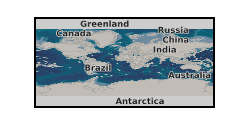
This poster on the UKCCSRC Call 1 project, Nano-seismic mapping at Aquistore, was presented at the Cranfield Biannual, 21.04.15. Grant number: UKCCSRC-C1-19.
 NERC Data Catalogue Service
NERC Data Catalogue Service